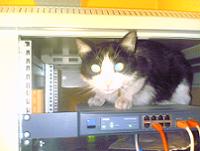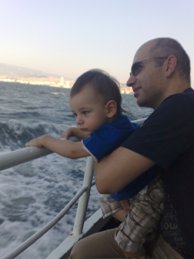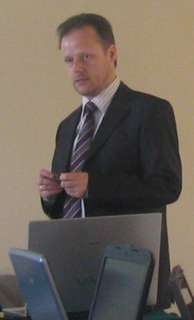DVX's AutoAssemble versus SDL's AutoSuggest Vestluse postitaja: Wolfgang Jörissen
|
|---|
Studio has been around now for a while and there are people out here using both systems, so my question is: where are the pros and cons of both technologies? What speeds you up and what slows you down?
And talking about my personal situation: how would a TM with 500K+ entries behave when compiling an AutoSuggest lexicon? I heard there are limitations?
| | | |
Wolfgang Jörissen wrote:
Studio has been around now for a while and there are people out here using both systems, so my question is: where are the pros and cons of both technologies?
The main AutoSuggest advantage is the case when you have only a TM (no termbase), you can generate a list of suggestions while DVX can't extract terminology candidates automatically.
If you have already huge DVX termbases, the Trados AS advantage is not so visible but for projects which come only with a TM and you start with an empty termbase, it may be drastic.
Of course, you can create and resolve DVX Lexicon but it's an additional (and probably time consuming) task you must do personally.
The main AS inconvenient is probably the fact the dictionaries are case sensitive (in DVX you can select the case conversion you prefer), so if you have "Vodka" in your dictionary, when you start ith a lower case, "vodka" will not be suggested.
It's really stupid.
Unlike in DVX, a hit is suggested only once (i.e. if for some reason you want to repeat the word suggested by AS, you must retype the second instance), it's somehow annoying (in DVX you use simply Alt+number).
The AS dictionary is created only once and must be regenerated if you want to include the suggestions from the ongoing project, the DVX AA can reuse immediately the entered units (terms/portions).
As DVX doesn't use special dictionaries, it has no limitations regarding to the size of the TM you use for the dictionary generation (min. 25000 units for Trados AS), so DVX AA may propose hits starting from the second unit in a blank project
DVX AutoAssemble translates all the hits simultaneously, the SDL AutoSuggest is "linear" and displays the hits as you type, so DVX will be always faster.
Nevertheless, if you have really a gazillion of hits in DVX (e.g. above 40-50), it may be difficult to display 'em all if you want to select one of multiple hits, you must to scroll the Portions window, Trados may be faster here because the hits are displayed only for one AS candidate.
Personally, I think DVX is still better, at least with my approach which is somehow close to the machine translation (huge termbases with syntax emulation).
Of course, other users may have other experience but you'll find few peoplo who switch from DVX to Trados
Nevertheless, AutoSuggest is a great feature.
What speeds you up and what slows you down?
The false positives and multiple hits in Autosuggest may be a pain in the arse.
The false positives may distract you.
The multiple hits may be difficult to insert.
Although the sorting is intelligent (starting from the largest suggestion), in some cases it's necessary to use heavily arrows or type a lot of letters in order to select the best hit (the forcing of a hit is faster in DVX if the hit list is not extremely long, see above).
And talking about my personal situation: how would a TM with 500K+ entries behave when compiling an AutoSuggest lexicon? I heard there are limitations?
According to Paul Filkin's explanation, see http://www.proz.com/forum/sdl_trados_support/146159-sdl_trados_studio_2009_auto_suggest_limit.html
the search depth may be lower but it still works.
Some performance lifting is expected for SP1.
PS.
The comparison is based on the plain vanilla Trados Studio 2009 (without possible SP1 beta modifications, I had no time to test it thoroughly).
Cheers
GG
[Edited at 2009-09-29 18:20 GMT]
| | | | | Why "versus"? | Sep 30, 2009 |
I use *both* the Intellitype autosuggest/autocomplete AutoHotKey script you can find here:
http://www.autohotkey.com/forum/topic667-15.html
*and/or* AutoAssemble, depending on the type of text.
Unlike SDL's AutoSuggest, you can use Intellitype in *any* Windows program.
[Edited at 2009-09-30 14:22 GMT]
| | | | | Intellitype in Studio | Dec 20, 2009 |
David Turner wrote:
Unlike SDL's AutoSuggest, you can use Intellitype in *any* Windows program.
Even Trados Studio users can use Intellitype

| | |
|
|
|
Jerzy Czopik 
Saksamaa
Local time: 17:26
Liige (2003)
poola - saksa
+ ...
| Multiple hits from AutoSuggest | Dec 20, 2009 |
Grzegorz Gryc wrote:
...
Unlike in DVX, a hit is suggested only once (i.e. if for some reason you want to repeat the word suggested by AS, you must retype the second instance), it's somehow annoying (in DVX you use simply Alt+number).
...
That's just a simple setting.
Per default AutoSuggest is set not to show entries, if they already appear in target.
This means, that if you ie have the "photo printer" twice in your sentence, the defauilt AS setting will show you the German "Fotodrucker" only once, and if the "Fotodrucker" is already in your target sentence, it will not show again when you start typing "Fot..."
But you can simply deselect this option in AutoSuggest-Dictionary settings under Tools - Options in Studio.
I agree, that the wording of this option might have been chosen better, but still I've got it - in my case AS suggestions apper as many times as I want them.
As for the updating of AutoSuggest dictionaries, it is indeed so, that they are created statically, meaning that after you've created an AS dictionary the only way to get it modified with an updated Translation Memory is to create it again. But this is not a major disadvantage. The process of creating an AS dictionary is automatic and very easy to maintain, so should I need to recreate my AS dictionaries I would simply tell the PC to do that over night. As you can simply overwerite exising dictionaries (provided of course you have backups of them - what I think is obvious to you, but does not seem to be so obvious to many others) you will not even need to change any settings.
However, as working with termbases is still a better way to get *exact* hits (AutoSuggest uses also Multiterm termbases for proividing suggestions), I do not really see any necessity to regenerate AS dictionaries. Once created from bigger TMs they may remain as fixed objects, and any new necessary terms will be added to termbase(s) on the fly - and this works in Studio indeed very good.
But in the end I must admit, that I can't compare anything, as I do not have the sligthest clue about DVX.
| | | | To report site rules violations or get help, contact a site moderator: You can also contact site staff by submitting a support request » DVX's AutoAssemble versus SDL's AutoSuggest | CafeTran Espresso | You've never met a CAT tool this clever!
Translate faster & easier, using a sophisticated CAT tool built by a translator / developer.
Accept jobs from clients who use Trados, MemoQ, Wordfast & major CAT tools.
Download and start using CafeTran Espresso -- for free
Buy now! » |
| | Pastey | Your smart companion app
Pastey is an innovative desktop application that bridges the gap between human expertise and artificial intelligence. With intuitive keyboard shortcuts, Pastey transforms your source text into AI-powered draft translations.
Find out more » |
|
| | | | X Sign in to your ProZ.com account... | | | | | |









